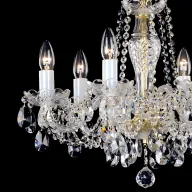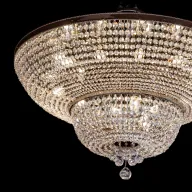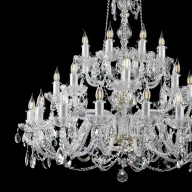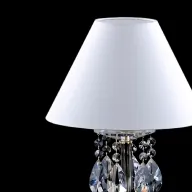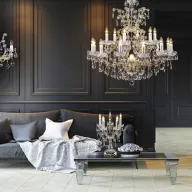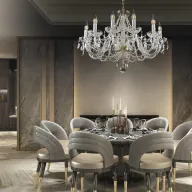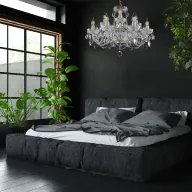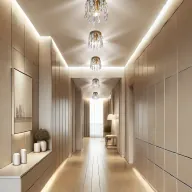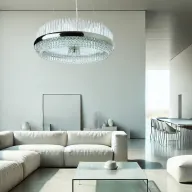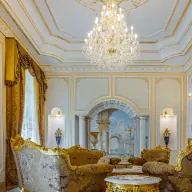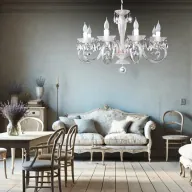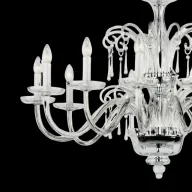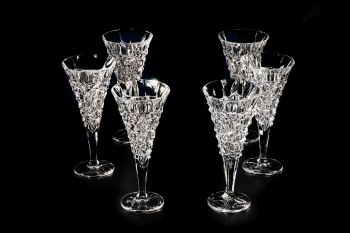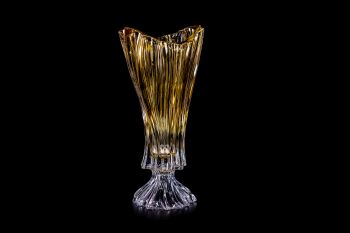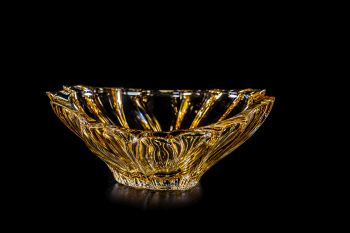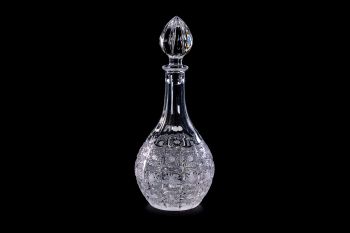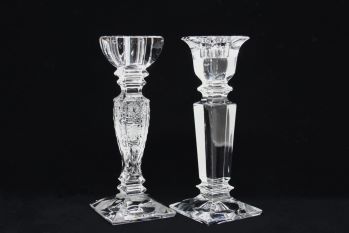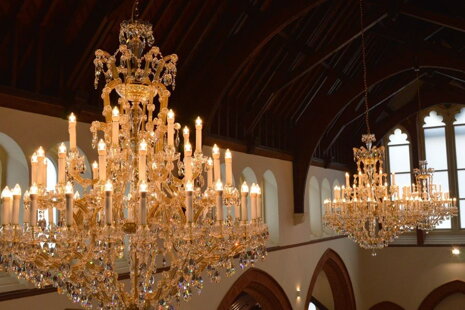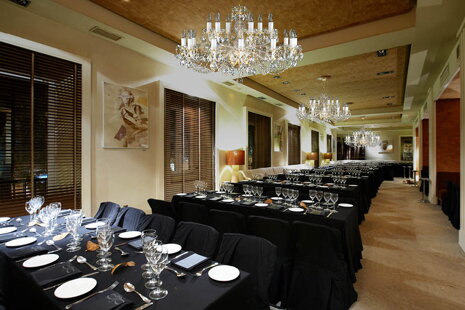Crystal chandeliers: From a candle to a LED bulb
Added 20.5.2020 10:02.56
A crystal chandelier is not an anachronism, as it would seem to be in the present modern times. On the contrary, you might be surprised at how beautiful a classical crystal chandelier looks in a modern interior. It could be considered a certain mark of luxury. Forget the chandeliers that your grandmothers had at home.
Our technologists and designers today are able to instil the classical chandelier with new flair and energy. With new technologies and production processes, conceiving it "differently" on the whole – in a modern fashion. And what light bulb should you use in a crystal chandelier? Even in such a classical product, you can use a LED bulb without any worries.
An age-old light source which has been known to the humankind in its primitive form since the prehistoric times: the candle. Our ancestors have used it since the times when they found that fibre, or a little piece of wood in solidified fat, gives light.

Already in the ancient times, the most suitable material for candle production has shown to be bee wax. However, since it was a material that was hard to get and therefore also quite expensive, wax candles were used only by the richest classes in the society. On the other hand, the most easily available material for thousands of years has been tallow, mutton, or bovine. The substance which put the candle out of the game in 1854, was kerosene. Only 25 years later, in 1879, the light bulb was invented, and its development is continuously moving forwards. It's undoubtedly necessary, since -frankly – what is the crown of all the world concert halls, theatres, castles, palaces, hotel foyers, and perhaps even "only" households? It's the legendary crystal chandelier.
When they didn't have light bulbs back then, and they used candles in the chandeliers, it was much more complicated. The tallow ones burned relatively quickly, and if the bowls under them weren't large enough, the tallow dripped on the floor. With wax candles, it was a bit better, but they also had to be replaced frequently, not to mention the cleaning afterwards...
The original Edison's light bulb had a carbon fibre, which was later replaced by wolfram, still used today. Today these light bulbs may be considered dated, and they are slowly being retired. Their biggest plus is probably the price, and also the fact that their brightness can be smoothly regulated (reduced). However, they have a very low energy efficiency, up to 95% of electric energy changes into heat. Most often you'll get 40W, the 60W and higher ones have been banned by the EU a couple of years ago.
A more efficient and younger sister of the wolfram light bulb is the halogen light bulb. Its fibre heats up to the highest temperature (this provides higher luminosity) and also longer durability can be achieved with it (it's the halogen compound that's added into the bulb). Also, most halogen light bulbs can be dimmed. A halogen bulb with an input of 28W can replace a 40W wolfram light bulb.

And finally, we're getting to the LED light bulbs. Those have definitely made the biggest leap over the last period of time. They function based on semiconductor plates, which change electric current to light. They have the longest durability (50 – 100 thousand hours), and also the highest efficiency. An LED bulb doesn't go well with a classical crystal chandelier? Maybe that used to be the case back then, but today it's not true anymore. Today you can choose an appearance which imitates a classical candle, even with a small flame. LED light bulbs can greatly enhance, and light up, the beauty of crystal.
They have great resistance against vibrations and impacts, and when it comes to energy consumption, they have no competitor. We use 4W bulbs in our chandeliers.
Just take a standard-sized eight-bulb chandelier. If we used 8 wolfram 40W light bulbs, then we achieve a consumption of 320W. A washing machine uses 425W over 3 cycles, a plasma uses TV 344W in 3 hours.
So, isn't 320W for a chandelier a bit too much? With 4W LEDs, the chandelier will have the consumption of 32W. That means the consumption will fall by 288W. That isn't exactly a small amount, right?
95% of the time our chandeliers have a narrow base, E14. Sometimes a wide base occurs (particularly in table lamps), E27. If you decide to buy a chandelier from us, we recommend getting LED light bulbs with these bases. You won't regret it :-)







